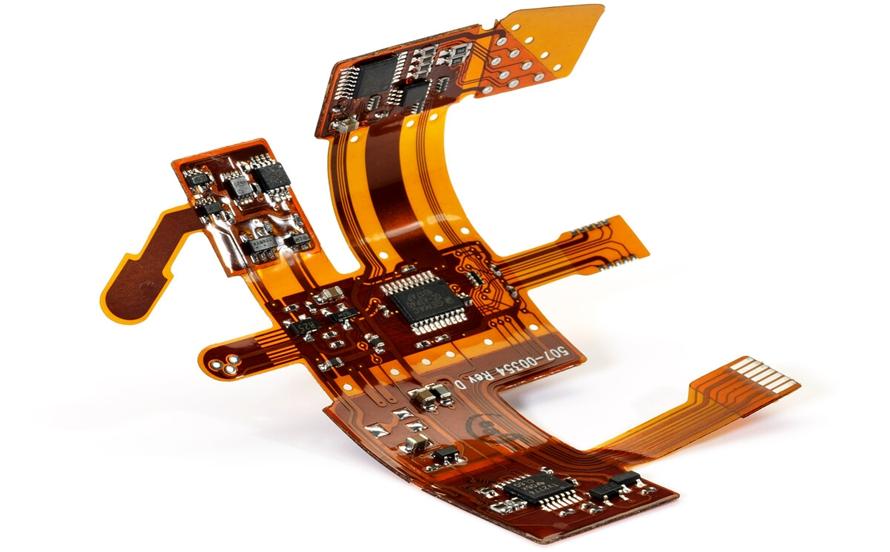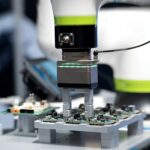Printed Circuit Boards have been derived into numerous kinds depending on the user preferences and application requirements. If we look at the latest trends in electronics and PCB stream, Flex PCBs stand with the most unique and popular features. Earlier the electronic circuit boards used to be rigid and size constrained due to the rigidity of the PCBs. Over time, PCB designers and engineers have developed flexible solutions for PCB design and manufacturing to cater to those limitations. Having flexible PCBs in PCB portfolios, it has become easier to make PCBs and products with desired shapes.
What are Flexible PCBs?
Flexible PCBs are boards composed of polyimide (PI) or polyester (PET). They have a strong mechanical, which makes them a great material for the wearable devices. When we manufacture flexible circuit boards, there are many potential points we have to pay attention to. Flexible PCBs may cause many problems when fabricating such as open or short. So we need to identify the problems and fix them.
Few Common Issues with Flex PCBs with Accurate Solution
Flex PCBs differ from the base substrate material and some components with regular PCBs. The flexible substrate with a metal base provides a sturdy yet flexible surface for circuit layout and rest components. It takes some particular approaches and technology to design, manufacture, and assemble Flexible PCBs. Similar to other PCB manufacturing processes; Flex PCB manufacturing additionally consists of some regular issues.
Flex PCB Design and Layout Considerations – Flex PCBs are designed as per the end product shape and specifications. Unlike regular PCB designs, Flex PCBs have more curves and bend aspects. In case of multi-layer requirement, all the layers need to be configured accordingly into a curved design. If the curve & bend criteria are not defined accurately during the design phase, it will result in poor product quality and reliability. Thus, adequate considerations and care must be taken while designing and layout finalization of Flex PCBs. The physical aspects of the PCBs like trace length, width, thickness, turn & angle play a major role in PCB functioning. All these parameters must be identified and finalized perfectly.
Flexible Substrate Selection & Manufacturing – The flexible substrate is the key component in Flex PCBs. This material has greater flexibility characteristics with suitable electrical and thermal properties. The selected substrate material must contain the required thermal, electrical and mechanical properties to handle end application requirements. The bending, twisting, folding & stacking of the flex material is done as per design requirements. PCB components and traces also pass through these critical areas. The material must be able to withstand into desired shape and condition for a long time. While manufacturing Flex PCB, substrate shape is required to be formed with utmost care as Flex PCBs have also become very tiny and highly dense with components.
End-to-end Flex PCB Manufacturing – Unlike regular PCB manufacturing and assembly, Flex PCBs demand for highly skilled operating process. The component placement, soldering and rest PCB manufacturing processes need to be carried out perfectly. Any deviation or error left during any of the steps will lead to major faults in the resulting product. Sufficient quality checks and product testing must be done while manufacturing and assembly of the Flex PCB to avoid any potential defects in the end product.
Operating Criteria – Despite having unique properties flex materials do contain some limitations in terms of temperature, power handling, heat generation and shape formation. These factors must be considered while defining the operating criteria for the Flex PCBs in the respective products. Electrical and electronic circuits work on defined logic with end-to-end signal integrity. The power and data signal integrity needs to be maintained at every part of the PCB to ensure the smooth functioning of the Flex PCBs. Overheating and overthermal conditions must be taken care of under complex conditions.
Application and Long-run Conditions – While designing the PCBs, the operating environment conditions are also defined by designers for a better understanding of the end users. The response of any product is majorly dependent on the operating environment and end-user behaviour. A product having the best characteristics may fail earlier than expected if used in the wrong way. The operating conditions, input-output parameters & harmful factors also affect the reliability and longevity of any product.
Some Proactive Solutions and Prerequisites
Each product and PCB design is carried out with standard operating criteria and the latest trends. Even after applying many quality measures and effective plans, some possibilities of random errors are still present. Flexible PCB manufacturing and assembly process is adjusted from time to time to eliminate these issues. This takes complete and relevant production data with analysis. Timely data analysis is carried out to identify the frequency and occurrence of the defects in the process. Post identification of errors, action plans are prepared, applied and maintained to ensure end product quality. The process capability also contributes to defect identification. The latest type of equipment and methods should also be implemented into the manufacturing process to look after uncertain conditions. Timely upgradation of process capability, latest machinery introduction and operator’s skill enhancements are also done to make the process more strong.
Conclusion
Flex PCBs have transformed the user experience effectively by providing greater flexibility in product design. With many advantages over regular PCBs, the manufacturing and assembly of Flex PCBs also become somehow critical due to product specifications. PCB assembly solution providers take many measures to ensure a robust Flex PCB solution for the clients. The common issues with Flex PCB manufacturing and assembly can be addressed by following standard practices. For some uncommon events, advanced skills and methods may be required for product reliability. Many upgraded techniques will be seen in the coming time for Flex PCBs and PCB board manufacturers need to catch up with the emerging techniques.






